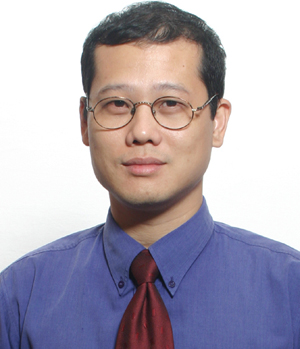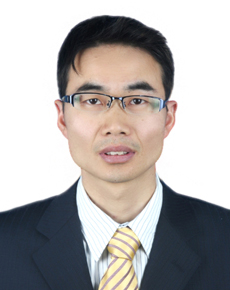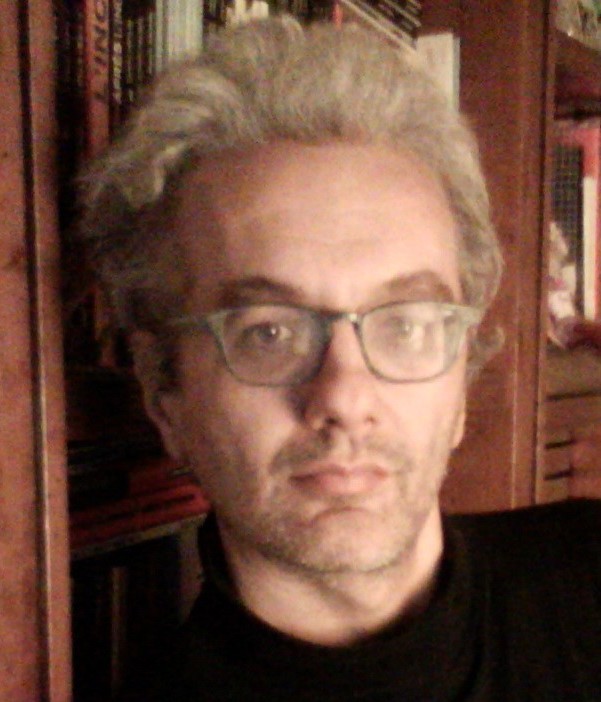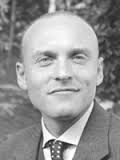1st International Electronic Conference on Micromachines and Applications
1–15 December 2017
- Go to the Sessions
- Event Details
Welcome from the Chairs
Cancellation 1st International Electronic Conference on Micromachines and Applications
Due to a limited number of high quality submissions to the 1st International Electronic Conference on Micromachines and Applications, we have unfortunately had to cancel this e-conference. However, we still want to offer contributing authors the chance to present their work. As such, we invite you to submit a related paper to the 4th International Electronic Conference on Sensors and Applications (ECSA). Please visit the section page at:
https://sciforum.net/conference/ecsa-4.
Though the submission deadline of ECSA is over, they are still receiving and accepting contributions. The conference will be held by next week (15-30 November 2017), so if you would like to participant this event, please submit the the abstract, full paper and/or presentation immediately.
We hope to organize an e-conference dedicated solely to Micromachines at a later date. The Organizing Committee wants to thank you very much for your interest and support and would be delighted if you joined the conference and discussions at the (ECSA) from 15-30 November 2017 (https://sciforum.net/conference/ecsa-4).
Kind regards,
The Organizing Committee of ECMA
********************************************
Welcome from the Chair of 1st International Electronic Conference on Micromachines and Applications
I am pleased to announce the 1st International Electronic Conference on Micromachines and Applications, which will be held on 1-15 December 2017 on this special platform, Sciforum, developed by MDPI in 2017. The conference offers a forum for the latest works on micro- and nanoscale machines. I encourage contributions on significant and original works related to all aspects of micro/nano-scaled structures, devices, systems as well as related micro- and nanotechnology ranging from fundamental research to applications. The conference is virtual and being held at Sciforum.net (https://sciforum.net/conference/ECMA-1); sponsored by the open access journal Micromachines. MDPI created this platform to organize conferences in electronic format, and to provide our research community with the technical support for hosting our digital conferences. The conference will cover the following main topics:
- A. Fundamental micro/nano phenomena
- B. Materials for micromachines
- C. Micro/nano fabrication and manufacturing technologies
- D. MEMS and NEMS
- E. Microfluidics and nanofluidics
- F. Poster section
Participation is free of charge—both for conference proceedings' authors and attendees. Accepted papers will be collated in the proceedings of the conference. There will also be a possibility to submit selected papers to the e-conference related Special Issue of the journal Micromachines, with a 20% discount on the APC (ISSN 2072-666X; Impact Factor: 1.833 (2016) www.mdpi.com/journal/micromachines).
I am looking forward to participate in exciting discussions, hearing new ideas and perspectives in the field and welcoming all participants to the online conference.

Best regards,
Prof. Dr. Nam-Trung Nguyen
Chair of the 1st International Electronic Conference on Micromachines and Applications
Editor-in-Chief, Micromachines
Queensland Micro- and Nanotechnology Centre,
Griffith University,
Brisbane, Queensland 4111, Australia
Nam-Trung Nguyen received his Dip-Ing, Dr Ing and Dr Ing Habil degrees from Chemnitz University of Technology, Germany, in 1993, 1997 and 2004, respectively. The habilitation degree (Dr Ing Habil ) is the qualification for a full professorship in Germany. In 1998, he was a postdoctoral research engineer in the Berkeley Sensor and Actuator Center (University of California at Berkeley, USA). Prof Nguyen is the First Runner Up of Inaugural ProSPER.Net-Scopus Young Scientist Awards in Sustainable Development in 2009 and the Runner Up of ASAIHL-Scopus Young Scientist Awards in 2008. He is a Fellow of ASME and a Member of IEEE. Nguyen’s research is focused on microfluidics, nanofluidics, micro/nanomachining technologies, micro/nanoscale science, and instrumentation for biomedical applications. He published over 280 journal papers and filed 8 patents, of which 3 were granted. Among the books he has written, the first and second editions of the bestseller “Fundamentals and Applications of Microfluidics” were published in 2002 and 2006, respectively. His latest book “Nanofluidics” was published in 2009. The second edition of the bestselling book “Micromixer” was acquired and published by Elsevier in 2011.
Advisory Committee
| Prof. Dr. Franck Chollet FEMTO-ST Institute, Université Bourgogne Franche-Comté, Besançon, France |
|
|
Politecnico di Milano, Italy |
|
|
Prof. Dr. Ha Duong Ngo |
|
|
Prof. Dr. Zhigang Wu |
 |
Conference Secretariat
Ms. Mengdie Hu & Ms. Wenwei LiE-mail: ecma@mdpi.com
Call for Papers
The 1st International Electronic Conference on Micromachines and Applications will be held on 1-15 December 2017. All proceedings will be held online at https://sciforum.net/conference/ECMA-1
The conference will cover the following main topics:
- A. Fundamental micro/nano phenomena
- B. Materials for micromachines
- C. Micro/nano fabrication and manufacturing technologies
- D. MEMS and NEMS
- E. Microfluidics and nanofluidics
- F. Poster section
The conference will be completely free of charge—both to attend, and for scholars to upload and present their latest work on the conference platform. There will be a possibility to submit selected papers to the journal Micromachines (ISSN 2072-666X, Impact Factor: 1.833, https://www.mdpi.com/journal/micromachines). ECMA-1 offers you the opportunity to participate in this international, scholarly conference without having the concern or expenditure of travel — all you need is your computer and access to the Internet. During the two-week conference period, presentations are uploaded and blog type commentaries are updated as scholars comment on each other's work. Your work is also presented in the form of a proceedings paper and you may also opt to contribute a (video) presentation. In this way, the conference offers an opportunity to exchange opinions and views within the scholarly community and discuss the papers and latest research in a discussion forum.
Abstracts (in English) should be submitted by 15 October 2017 31 October 2017 online at https://www.sciforum.net/login. For accepted abstracts, the full paper can be submitted before 30 November 2017. The conference itself will be held 1-15 December 2017.
For information about the procedure for submission, peer-review, revision and acceptance of conference proceedings papers, please refer to the section "Instructions for Authors" https://sciforum.net/conference/ECMA-1/page/instructions.
Instructions for Authors
Submissions should be done by the authors online by registering with www.sciforum.net, and using the "Submit New Abstract" function once logged into system.
- Scholars interested in participating with the conference can submit their abstract (about 200-300 words covering the areas of manuscripts for the proceedings issue) online on this website until 15 October 2017 31 October 2017.
- The Conference Committee will pre-evaluate, based on the submitted abstract, whether a contribution from the authors of the abstract will be welcome for the 1st International Electronic Conference on Water Science. All authors will be notified before 31 October 2017 10 November 2017 about the acceptance of their abstract.
- If the abstract is accepted for this conference, the author is asked to submit his/her manuscript, optionally along with a PowerPoint and/or video presentation of his/her paper (only PDF), until the submission deadline of 30 November 2017.
- The manuscripts and presentations will be available on https://sciforum.net/conference/ECMA-1 for discussion and rating during the time of the conference 1-15 December 2017.
- Accepted papers will be published in the proceedings of the conference online. After the conference, select papers are welcome for publication in the Special Issue "Selected Papers from the 1st International Electronic Conference on Micromachines and Applications" by the Open Access Journals Micromachines (Impact Factor: 1.833) with a 20% discount off the Article Processing Charge (APC).
Manuscripts for the proceedings issue must have the following organization:
- Title
- Full author names
- Affiliations (including full postal address) and authors' e-mail addresses
- Abstract
- Keywords
- Introduction
- Methods
- Results and Discussion
- Conclusions
- (Acknowledgements)
- References
Manuscripts should be prepared in MS Word or any other word processor and should be converted to the PDF format before submission. The publication format will be PDF. The manuscript should count at least 3 pages (incl. figures, tables and references). There is no page limit on the length, although authors are asked to keep their papers as concise as possible.
Authors are encouraged to prepare a presentation in PowerPoint or similar software, to be displayed online along with the Manuscript. Slides, if available, will be displayed directly in the website using Sciforum.net's proprietary slides viewer. Slides can be prepared in exactly the same way as for any traditional conference where research results can be presented. Slides should be converted to the PDF format before submission so that our process can easily and automatically convert them for online displaying.
Besides their active participation within the forum, authors are also encouraged to submit video presentations. If you are interested in submitting, please contact the conference organizer at ecma@mdpi.com to get to know more about the procedure. This is an unique way of presenting your paper and discuss it with peers from all over the world. Make a difference and join us for this project!
Submission: Manuscripts should be submitted online at www.sciforum.net/login by registering and logging in to this website.
Accepted File Formats
- MS Word: Manuscript prepared in MS Word must be converted into a single file before submission. When preparing manuscripts in MS Word, the Electronic Conference on Materials Science Microsoft Word template file (see download below) must be used. Please do not insert any graphics (schemes, figures, etc.) into a movable frame which can superimpose the text and make the layout very difficult.
- Electronic Conference on Micromachines and Applications MS Word Template File
- References: References must be numbered in order of appearance in the text (including tables and legends) and listed individually at the end of the manuscript. We recommend preparing the references with a bibliography software package, such as EndNote, ReferenceManager or Zotero to avoid typing mistakes and duplicated references. Citations and References in Supplementary files are permitted provided that they also appear in the main text and in the reference list. In the text, reference numbers should be placed in square brackets [ ], and placed before the punctuation; for example [1], [1–3] or [1,3]. For embedded citations in the text with pagination, use both parentheses and brackets to indicate the reference number and page numbers; for example [5] (p. 10). or [6] (pp. 101–105). The Reference list should include the full title as recommended by the ACS style guide. The style file for endnote, MDPI.ens, can be found at https://endnote.com/downloads/style/mdpi
- Author List and Affiliations: Authors' full first and last names must be provided. The initials of any middle names can be added. The PubMed/MEDLINE standard format is used for affiliations: complete address information including city, zip code, state/province, country, and all email addresses. At least one author should be designated as corresponding author, and his or her email address and other details should be included at the end of the affiliation section. Please read the criteria to qualify for authorship.
- Figures, Schemes and Tables: All figure files should be separately uploaded during submission. Figures and schemes must be provided at a sufficiently high resolution (minimum 1000 pixels width/height, or a resolution of 300 dpi or higher). All Figure file formats are accepted. However, TIFF, JPEG, EPS and PDF files are preferred. Materials can publish multimedia files in articles or as supplementary materials. Please get in touch with the Editorial office for further information. All Figures, Schemes and Tables should also be inserted into the main text close to their first citation and must be numbered following their number of appearance (Figure 1, Scheme I, Figure 2, Scheme II, Table 1, etc.). All Figures, Schemes and Tables should have a short explanatory title and a caption. All table columns should have an explanatory heading. To facilitate the copy-editing of larger tables, smaller fonts may be used, but in no less than 8 pt. in size. Authors should use the Table option of Microsoft Word to create tables. For multi-panel figures, the file must contain all data in one file. For tips on creating multi-panel figures, please read the helpful advice provided by L2 Molecule. Authors are encouraged to prepare figures and schemes in color (RGB at 8-bit per channel). Full color graphics will be published free of charge.
For further enquiries please contact us at ecma@mdpi.com.
Authors wishing to publish their papers are asked to abide to the following rules:
- Any facts that might be perceived as a possible conflict of interest of the author(s) must be disclosed in the paper prior to submission.
- Authors should accurately present their research findings and include an objective discussion of the significance of their findings.
- Data and methods used in the research need to be presented in sufficient detail in the paper, so that other researchers can replicate the work.
- Raw data should preferably be publicly deposited by the authors before submission of their manuscript. Authors need to at least have the raw data readily available for presentation to the referees and the editors of the journal, if requested. Authors need to ensure appropriate measures are taken so that raw data is retained in full for a reasonable time after publication.
- Simultaneous submission of manuscripts to more than one journal is not tolerated.
- Republishing content that is not novel is not tolerated (for example, an English translation of a paper that is already published in another language will not be accepted).
- If errors and inaccuracies are found by the authors after publication of their paper, they need to be promptly communicated to the editors of this journal so that appropriate actions can be taken. Please refer to our policy regarding publication of publishing addenda and corrections.
- Your manuscript should not contain any information that has already been published. If you include already published figures or images, please obtain the necessary permission from the copyright holder to publish under the CC-BY license.
- Plagiarism, data fabrication and image manipulation are not tolerated.
MDPI AG, the publisher of the Sciforum.net platform, is an open access publisher. We believe that authors should retain the copyright to their scholarly works. Hence, by submitting a Communication paper to this conference, you retain the copyright of your paper, but you grant MDPI AG the non-exclusive right to publish this paper online on the Sciforum.net platform. This means you can easily submit your paper to any scientific journal at a later stage and transfer the copyright to its publisher (if required by that publisher).
Conference Schedule
Notification of Acceptance: 31 October 2017 10 November 2017
Deadline for Submission of Full Paper: 30 November 2017
Conference Open: 1-15 December 2017
Conference Organizers
Conference Chair
Prof. Dr. Nam-Trung Nguyen
Griffith University, Australia
Scientific Advisory Committee Members
Prof. Dr. Franck Chollet, Université Bourgogne Franche-Comté, France
Prof. Dr. Stefano Mariani, Politecnico di Milano, Italy
Prof. Dr. Ha Duong Ngo, University of Applied Sciences, Germany
Prof. Dr. Zhigang Wu, Huazhong University of Science and Technology, China
Conference SecretariatMs. Mengdie Hu & Ms. Wenwei Li
E-Mail: ecma@mdpi.com
E-Mail: mengdie.hu@mdpi.com
A. Fundamental micro/nano phenomena
Section Chair:
Prof. Dr. Nam-Trung Nguyen, Queensland Micro- and Nanotechnology Centre, Griffith University, Brisbane, Queensland 4111, Australia
The Fundamental Micro/Nano Phenomena Section covers all fundamental aspects of physics, chemistry and biology in the microscale (between 100 nm and 1mm) and nanoscale (less then 100 nm). We invite contributions to the following topics:
- Electrical, mechanical and optical properties of nanoscale structures
- Multiphysics, interactions between physical domains in the nano/microscale
- Fluid-structure interactions in the micro/nanoscale
- Behavior and response of biological systems (cells, tissues, biomarkers) to physical stimuli (strain, light, temperature, electric field and magnetism)
- Interactions between flow field with electric, magnetic, acoustic and optic fields (electrokinetics, micro magnetofluidics, micro acoustofluidics, micro optofludics)
- New experimental tools based on the above micro/nano phenomena
- New sensing and diagnostics techniques based on the above micro/nano phenomena
- New simulation approaches addressing the multiphysics nature of the above micro/nano phenomena
Session Chair
Dr. Nam-Trung Nguyen
B. Materials for micromachines
Section Chair:
Prof. Dr. Ha Duong Ngo, Hochschule für Technik und Wirtschaft Berlin, University of Applied Sciences, Germany
Micro- and nano- systems represent broad and diverse technological areas, such as microactuators (electrostatic, electrothermal, PZT etc.), microsensors (mechanical, chemical), microfluidics (micropumps, lab-on-chip, organs-on-chip), micro energy harvesting (PZT, electrostatic), optics, photonics, wireless signal transmission. This is a multi-disciplinary field, including micro- and nano mechanics, electronics, micro and nano fluidics, optics, technology and very important material science.
Many microsystems use standard materials such as silicon, and gallium arsenide (GaAs) for the sensing or actuating elements. These materials are chosen mainly because their properties are well known, and their fabrication and packaging techniques are well established. However, there are many other materials used for MEMS and micro-systems products—such as quartz, ceramics and Pyrex, Silicon carbide for high temperature applications, ZnO, ITO for transparent electrodes applications, silicene, CNT, graphene, 1D and 2D nanomaterials for printed microsystems, are just few materials to mention—that are not commonly used in microelectronics. Plastics and polymers are also used extensively in the case of organic, stretchable and wearable microsystems.
The general purpose of the session “Materials for Micromachines” is to provide opportunities for scientists and engineers from all over the world to present their work and to discuss current research on the subject.
- Microelectromechanical system
- Microsensors
- Microactuators
- Nanomechanics
- Micromachanics
- Semiconductors
- Organic Semiconductors
- Stretchable electronics
- Polymers
- Metals
- Glass
- Ceramics
- CNT
- Graphene
- Scaling Law
- BioMEMS
- BioSensors
- 2d materials
- 1d materials
- Inks
Session Chair
Dr. Ha Duong Ngo
C. Micro/nano fabrication and manufacturing technologies
Section Chair:
Prof. Dr. Franck Chollet, Institut FEMTO-ST, Université de Franche-Comté, 25030 Besançon cedex, France
The Micro/nano fabrication and manufacturing technologies Section is aimed at showcasing contributions on all aspects of the fabrication of Micro-Electro-Mechanical-Systems (MEMS) and Nano-Electro-Mechanical-Systems (NEMS).
Contributions are welcome to address, among others, the following topics, but not limited to:
- Micro/nano fabrication process modeling
- Structuration techniques for emerging material, like graphene, CNT, perovskite, hard oxyde, etc.
- Novel micro/nano fabrication process (thermal scanning probe lithography, 3D laser glass machining, ice lithography, process outside clean-room environment, non-silicon process...)
- Complex MEMS/NEMS batch fabrication process (multi-physics MEMS, multi-functionnalities...)
- Combination of micro and nano fabrication
- Assembly of MEMS (robotic, stacked wafers, self-assembly...)
- Packaging with complex interfacing (microfluidics, large force sensors, optofluidics...)
Session Chair
Professor Franck Chollet, FEMTO-ST Institute
D. MEMS and NEMS
Section Chair:
Prof. Dr. Stefano Mariani, Department of Civil and Environmental Engineering, Politecnico di Milano, Italy
The MEMS and NEMS Section is aimed at gathering together contributions on the modelling and analysis of Micro-Electro-Mechanical-Systems (MEMS) and Nano-Electro-Mechanical-Systems (NEMS), and on their real-life applications. Works on the theoretical, numerical and experimental aspects are solicited, especially those stemming from multi-disciplinary approaches.
Contributions are welcome to address the following topics:
- Multi-physics modeling
- Uncertainty quantification at the micro- and nano-scale
- System identification and control
- Sensor optimization
- Damping phenomena
- Stiction and other contact or proximity phenomena
- Effect of emerging materials, like graphene
MEMS applications to be considered include, but are not limited to:
- Biomedical Engineering
- Sensors and Actuators
- Acoustics
- Optics
- Data Storage
- Wireless Communication
- Energy Harvesters
- Environmental Monitoring
Session Chair
Dr. Stefano Mariani, Politecnico di Milano
Show all accepted abstracts (1) Hide accepted abstracts (1)
List of Accepted Abstracts (1) Toggle list
E. Microfluidics and nanofluidics
Section Chair:
Prof. Dr. Zhigang Wu, School of Mechanical Science and Engineering, Huazhong University of Science and Technology, China
The Microfluidics and nanofluidics Section is aimed at exploring all aspects from fundamentals, applications and platform technologies.
Contributions are welcome to address the following topics:
- Fundamentals in microfluidics and nanofluidics
- Fluid control and manipulation
- Sensors, actuators, and detection technologies
- Integrated micro & nanofluidics platforms
- Cells, vesicle, organisms, organs analysis, manipulation and culture on chip
- Separation technologies
- Diagnostic, translational medicine and life science in micro & nanofluidics
Session Chair
Professor Zhigang Wu
Show all accepted abstracts (1) Hide accepted abstracts (1)
List of Accepted Abstracts (1) Toggle list










